Surface Book 2 13-inch review: A good thing made great
The Surface Book 2 13 aims to be the ultimate laptop. Here is why Microsoft may have finally succeeded in making this device what everyone wants it to be with few tradeoffs for once.
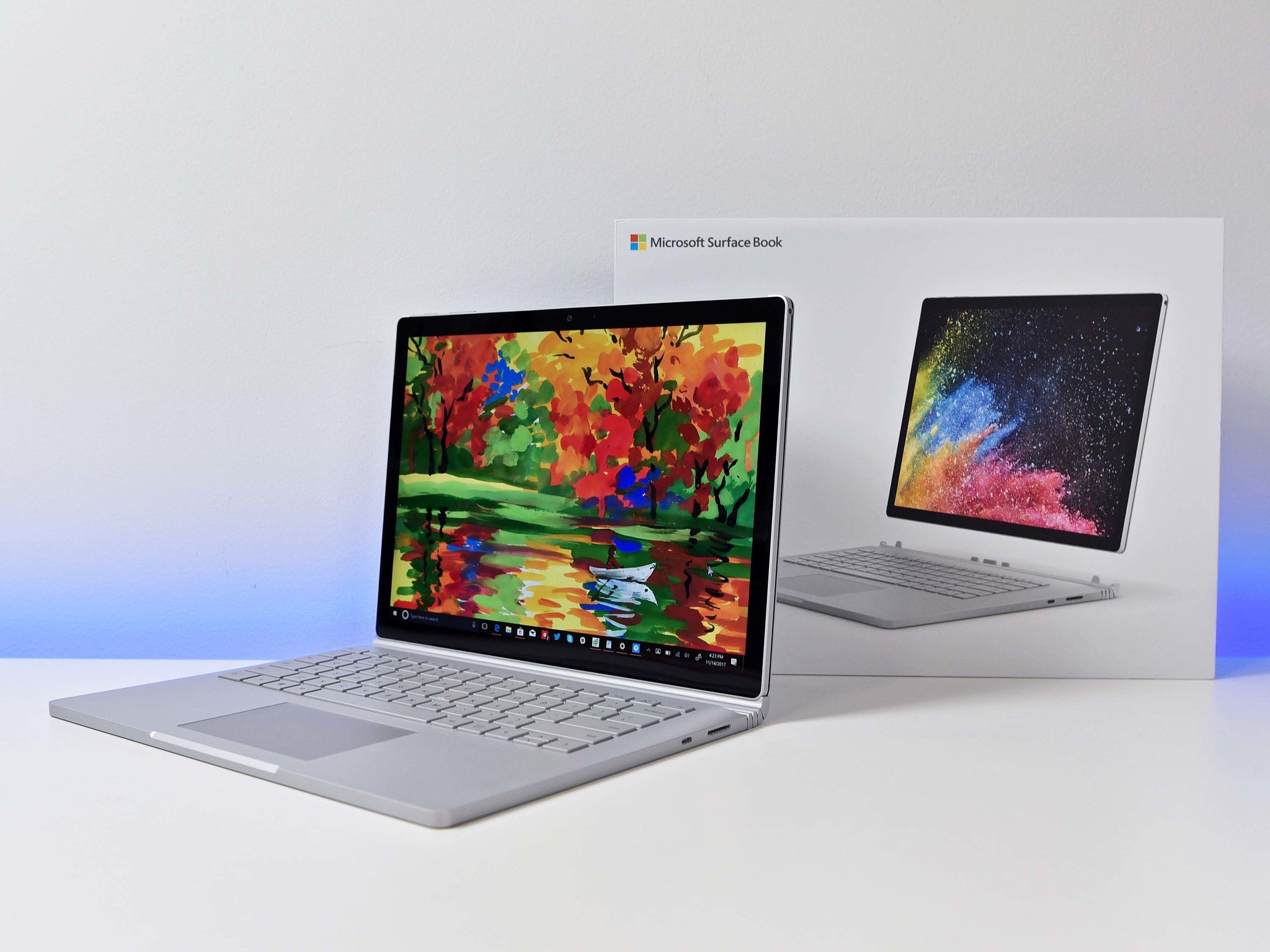
The original Surface Book launched in the fall of 2015 to critical acclaim only to be tormented by early driver issues, random battery drains, and other bugs that ruined the experience for many.

Microsoft is giving it another go with the Surface Book 2 13 for 2017. It's a stellar example of why waiting for version two of a new product is probably a good idea. Luckily, this Surface Book is a worthy successor that delivers outstanding performance with all-day battery.
About this Surface Book 2 review
Microsoft supplied a loaner Surface Book 2 13-inch for review purposes. The unit tested features a Core i7-8650U processor, GTX 1050 GPU, 16GB of RAM and 1TB of storage. It costs $2,999. Starting price of the 13-inch model begins at $1,499 with a dual-core Core i5, 8GB of RAM and 256GB of storage. Other options for the Core i7 model with GTX 1050 GPU include 256GG and 512GB configurations.
Check out our review of the larger 15-inch Surface Book 2
Big power, small package
Microsoft Surface Book 2 13 specifications
The Surface Book 2 13 comes in four configurations. One offers an older Intel Core i5-7300U that is only dual core and has no discrete GPU. That model is also completely fanless.
Get the Windows Central Newsletter
All the latest news, reviews, and guides for Windows and Xbox diehards.
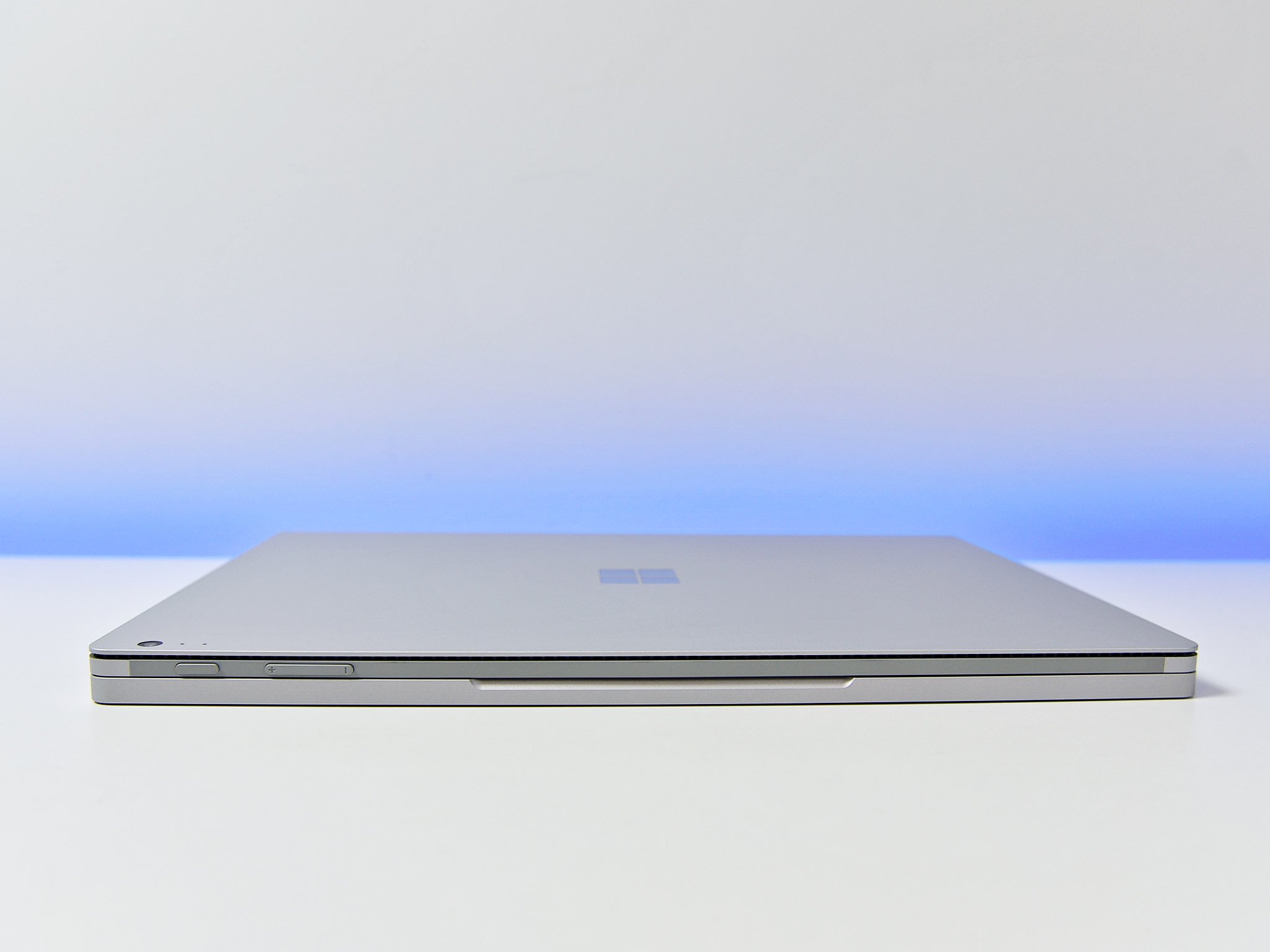
The other three models all use the newer Intel Core i7-8650U quad-core processor and ranges from 8 to 16GB of RAM with varying about of storage. All three of these models have an NVIDIA GTX 1050 GPU with 2GB of video memory.
| Category | Surface Book 2 13 inch |
|---|---|
| Processor | Intel Core i5 (3.2GHz)Intel Core i7 (4.2GHz) |
| Display size | 13.5 inch1600:1 contrast ratio |
| Display resolution | 3000 x 20003:2 aspect267 PPI |
| RAM | 8GB or 16GB |
| Native graphics | Intel HD Graphics 620Intel UHD Graphics 620 |
| Discrete graphics | i5: Nonei7: NVIDIA GTX 1050 (2GB) |
| Storage | 256GB, 512GB, or 1TB |
| Weight | i5 total: 1,533g (3.38lbs)i7 total: 1,642g (3.62lbs)Tablet: 719g (1.59lbs) |
Full Surface Book 2 specifications
The big deal here with the Core i7 processor is it is the brand-new 8th generation version that goes from a dual-core to quad-core. Up until now, only more massive laptops with 45W processors were quad-core, but now Ultrabooks with 15W motherboards can get double the cores and threads. That matters less for running a web browser or Windows Store apps and more for CPU-intensive applications like CAD, video and photo rendering, 3D model makers, or crunching large amounts of data in Excel or engineering applications.
Although the Surface Book 2 15 also has the same Core i7-8650U processor it has a higher thermal-design point (TDP) at 20W versus just 15W for this 13-inch Surface Book 2.
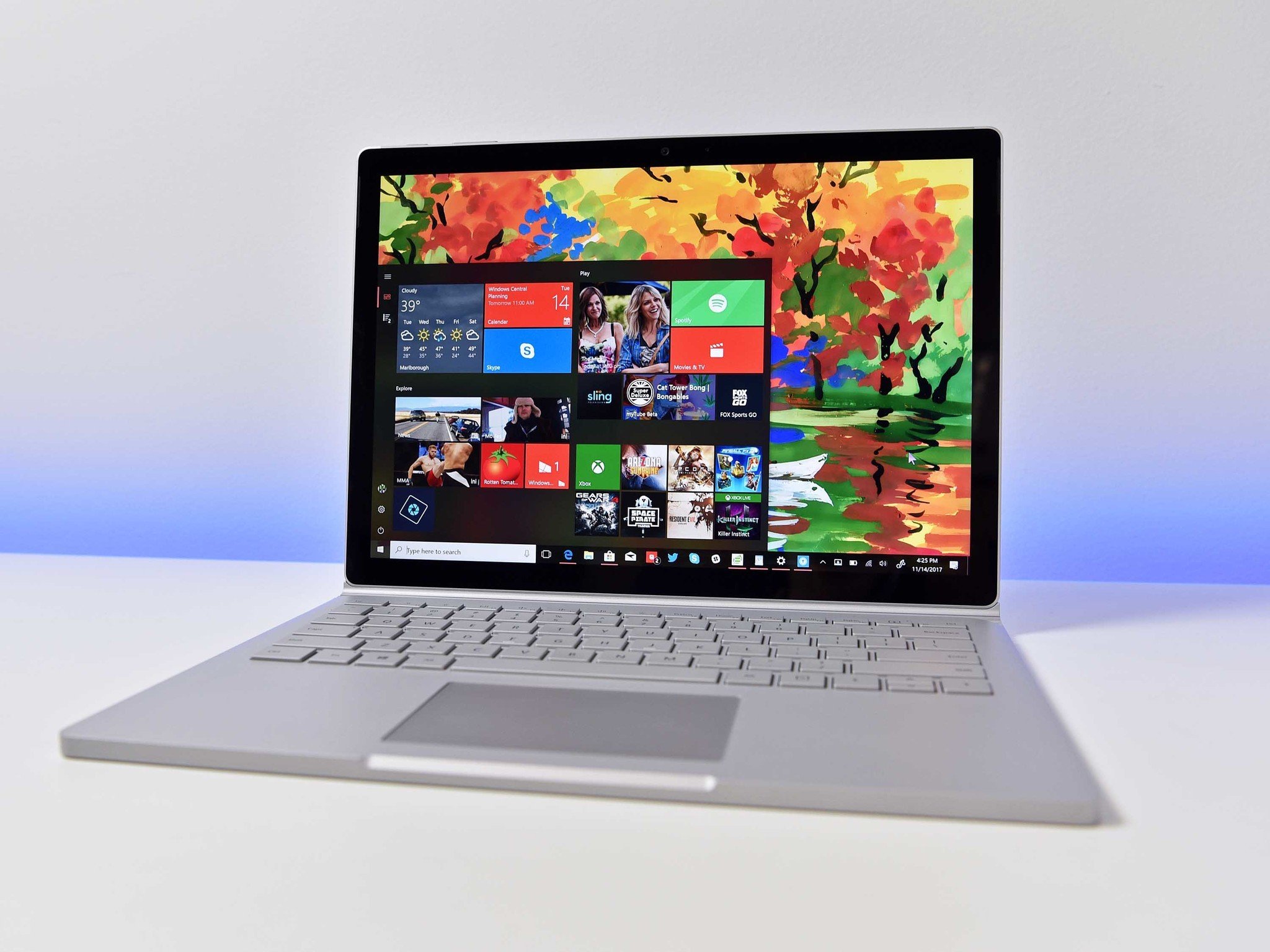
As a tradeoff, however, the 13-inch model does not have any fan for the CPU in the tablet area, making it very quiet. There is a fan in the base for the NVIDIA GTX 1050 GPU.
For storage, at least with the 1TB version, Microsoft is using a Samsung PCIe NVMe solid-state drive (SDD), which is an excellent choice for concerned about performance.
As summarized, here is how the Surface Book 2 13 with Core i7 differs from the 15-inch variant:
- Core i7 with a thermal design point (TDP) of 15W compared to more powerful 20W in the 15-inch.
- No fan for the CPU in the tablet half of the Surface Book 2 13.
- NVIDIA GTX 1050 with 2GB video memory instead of an NVIDIA GTX 1060 with 6GB.
- Smaller display (13.5- vs 15-inch) with a lower resolution (3000 x 2000 vs 3240 x 2160), but a slightly higher dots-per-inch (267 DPI vs 260).
- There is no Xbox Wireless support built-in; must use a Bluetooth controller or wired.
- Smaller battery (70WHr vs. 80 WHr).
- No Enhanced and sRGB color profiles.
- Magnetic attachment for Surface Pen (optional) only on the left side of the tablet, instead of both sides on the 15.
- Same bezel size as original Surface Book; slightly larger than the 15-inch model.
Despite having a typical TDP for the processor and the GTX 1050 (instead of a GTX 1060) the Surface Book 2 13 is still very performant.
If it ain't broke
Surface Book 2 13 design
Microsoft did not deviate from the original Surface Book design with the Surface Book 2. The 13-inch model is a spitting image of the original, but it is technically more like a combination of the first Surface Book and the later Surface Book with Performance Base, but with better hardware.
The Surface Book 2 is a spitting image of the original
The magnesium chassis of the Surface Book 2 15 is stable, smooth, and very durable. Since there is no paint – unlike the Surface Laptop in various colors – there is only concern over light scuffing rather than paint scratches. There are no creaks or weak points due to the unibody design. That also means, however, there are no entry points for repairs on the Surface Book 2 nor any way to upgrade internal components.
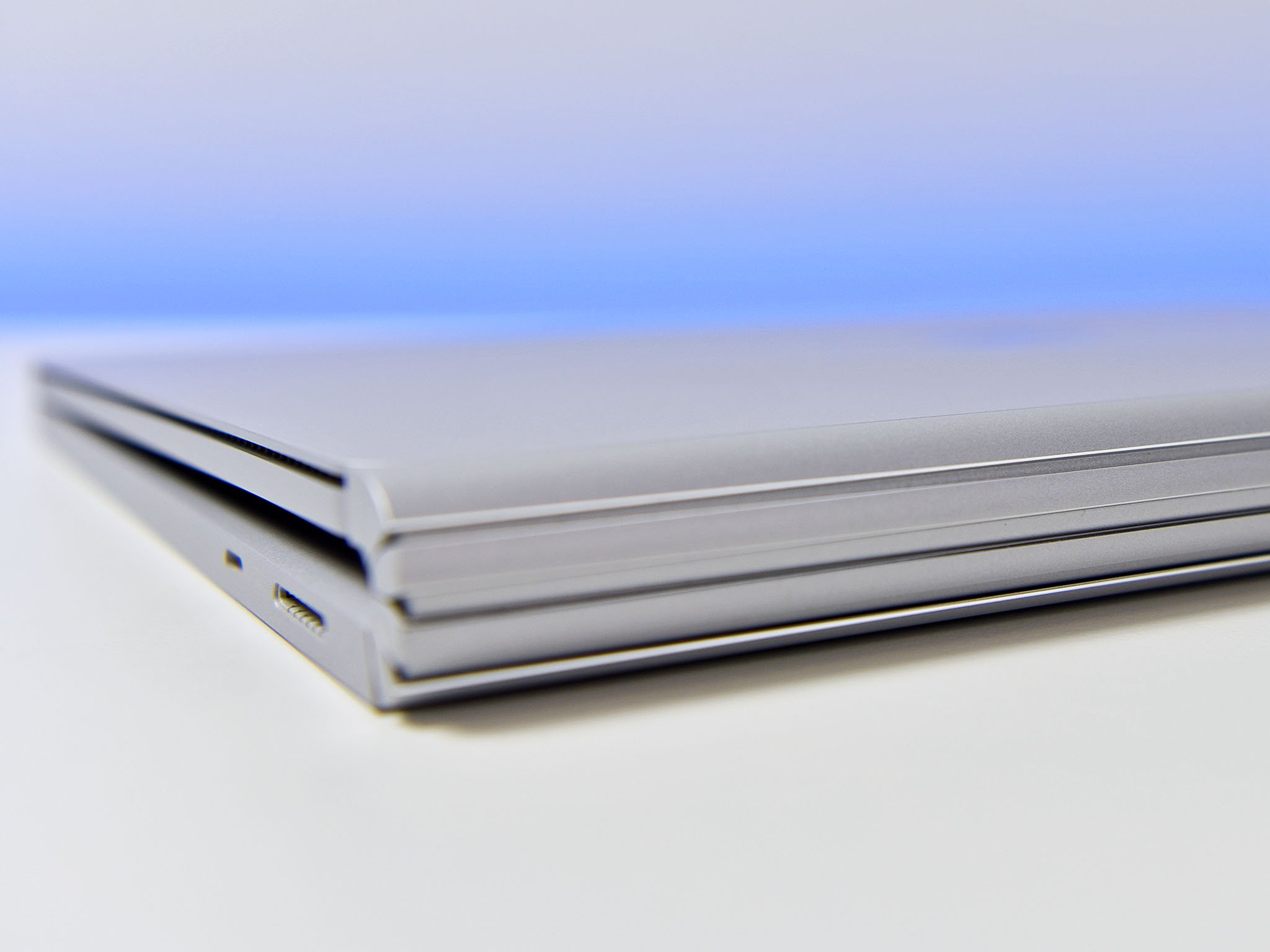
The claim to fame with Surface Book 1 and 2 is the ability to press a release button on the keyboard that separates the display from the main laptop body. Microsoft achieved this by putting all the PC innards – CPU, RAM, storage, Wi-Fi/Bluetooth, and some battery – into the display, while the base acts as a larger battery and houses the full NVIDIA GPU. It's a fantastic feat of engineering.
The display removed from the base can act as a standalone PC tablet with multiple hours of battery life. It can also be reversed to bring the screen closer to the user (e.g., when watching a movie) or lay down flat ("studio mode"), which simulates a drafting table.
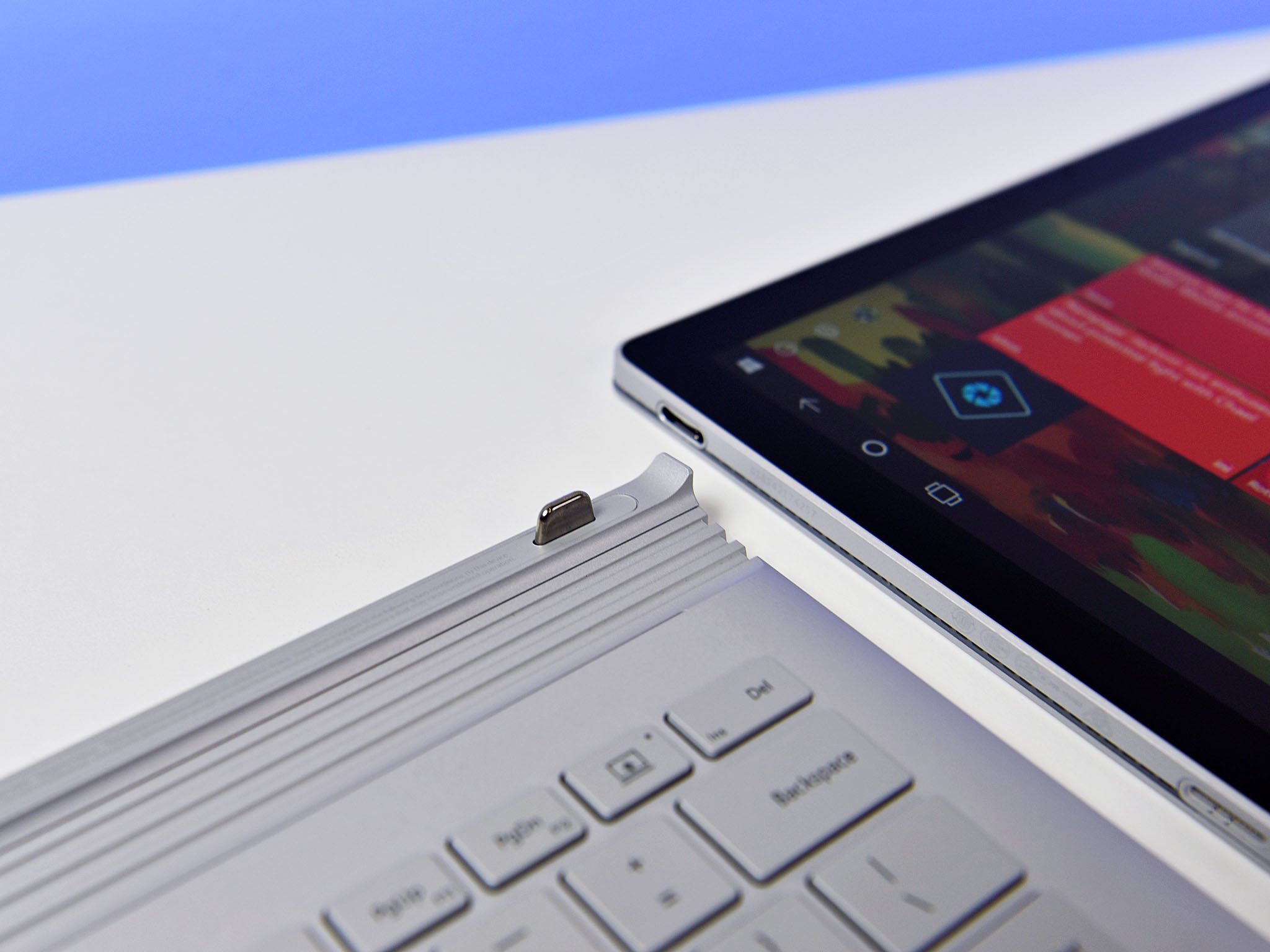
For 2017, the fulcrum hinge, which expands the base of the laptop when opened, has not changed from its predecessor. There is still the iconic "gap" when the Surface Book is closed giving the device its book-like shape. However, the muscle wire mechanism that releases the tablet from the base and the tabs that hold it secure have been rebuilt and simplified internally. The release is now much quieter when engaging, and the larger tabs reduced any screen wobble when using it as a laptop. The display can also be opened one-handed and is easy to do with the massive front notch.
At 3.62lbs (1,642g) the Surface Book 2 13 is a smidge lighter than the Surface Book with Performance Base (3.63lbs, or 1,647g) but it is more substantial than the original Surface Book at 3.34lbs (1,515g).
As a tablet, the Surface Book 2 13 weighs just 1.6lbs (719 grams). Giving the tablet portion to friends and everyone remarks how much lighter it is than expected. Considering there is a full, quad-core Core i7 processor with 1TB of storage and 16GB of RAM in the display the tablet is quite remarkable for its size and weight.
3:2 is where it's at
Surface Book 2 display and inking
Featuring a 3000 x 2000 PixelSense LCD touch display with a 1600:1 contrast ratio and 3:2 aspect the screen in the Surface Book 2 13 is superb.
A calibration test revealed 99 percent sRGB and 80 percent Adobe RGB coverage, which is nearly perfect for sRGB. The 13-inch model also edges out the bigger 15-inch Surface Book 2, which had 98 percent sRGB and 75 percent Adobe RGB.

Colors looked bright, contrasty, and the backlight is evenly distributed. Glare is also not an issue, though it is a glossy display. While the bezels on the 15-inch model are slightly narrower, the 13.5-inch Surface Book 2 matches the original Surface Book and looks proportional.
Display brightness is also excellent, though not extraordinary, compared to some newer laptops with an outdoor mode. There is an auto-adjust sensor to manipulate display brightness based on ambient room light. It works well and evidently uses direct current to reduce some subtle screen flickering that cheaper displays exhibit.
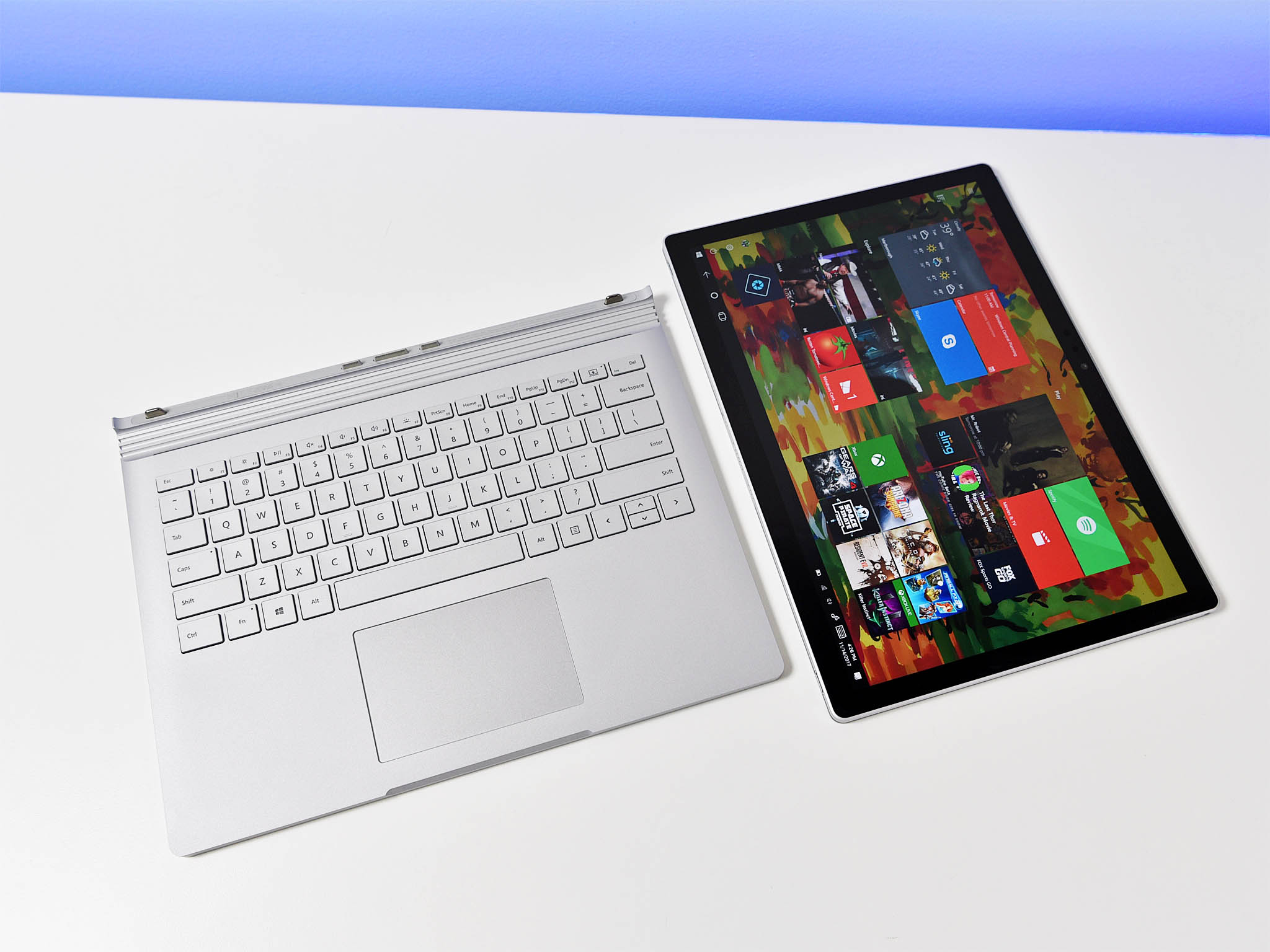
Unfortunately, unlike the Surface Book 2 15, the 13-inch does not have native color profiles for Enhanced or sRGB. It's not clear why the new Surface Pro has these color profiles, which are also found in Surface Studio, but not the 13-inch Surface Book 2.
There is some minor light bleed found in all LCD type displays, but it is only noticeable during initial boot when the display brightness is maxed on a gray background and not during usage.
Microsoft no longer includes a Surface Pen with the Surface Book – just like with Surface Pro – so users will need to pay another $99 (or use an older Surface Pen). The Surface Book 2 supports 4,096 levels of pressure and tilt support, and offers a mere 21-millisecond latency thanks to Microsoft's custom PixelSense Accelerator chip — though that's only with the new Surface Pen.
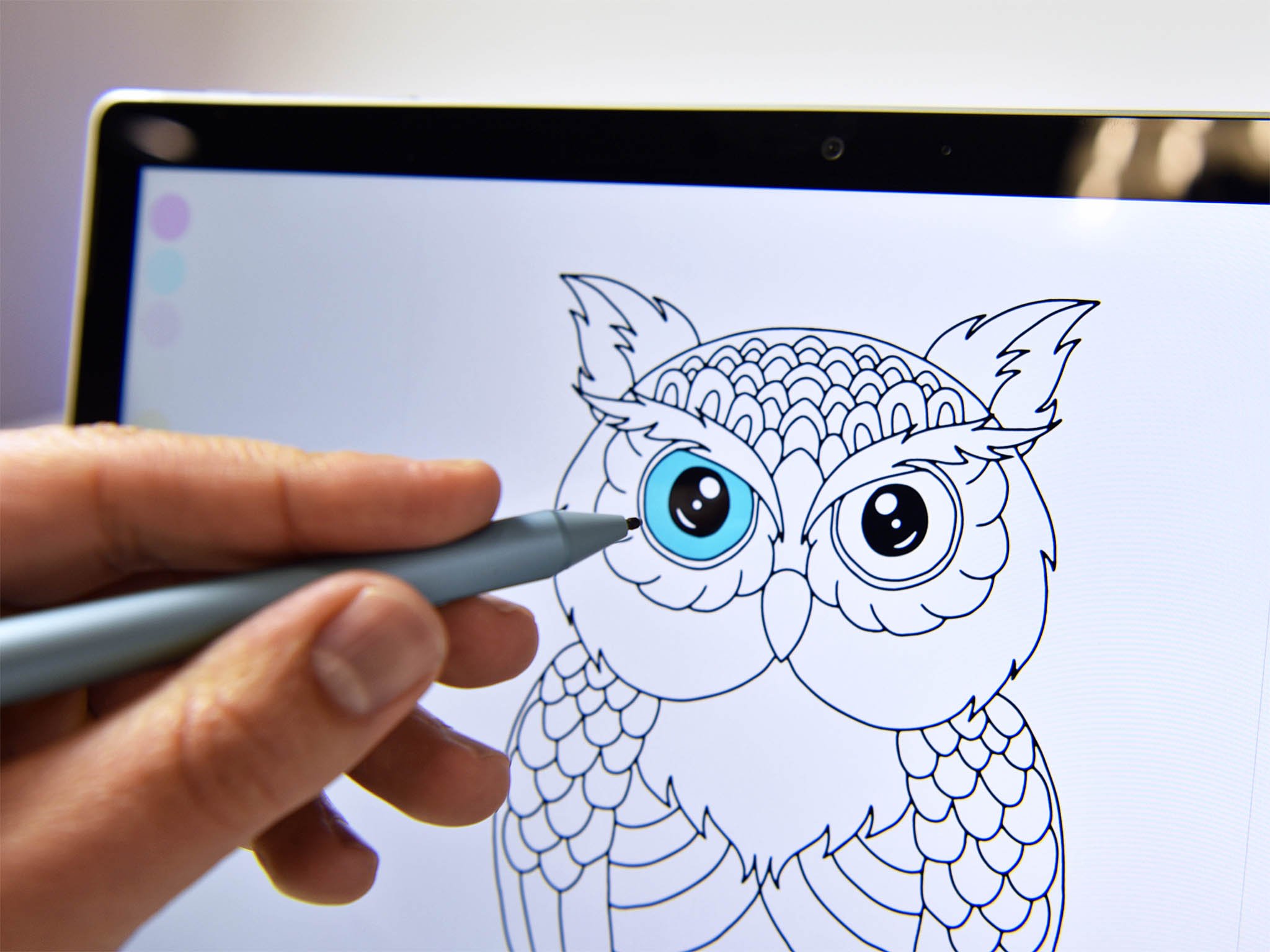
While I'm no artist, I enjoyed using the Surface Pen especially with the display in "studio mode" (reversed display). For taking notes, signing a PDF document, or drawing the Surface Book 2 appears to deliver the same level of digital inking as the new Surface Pro.
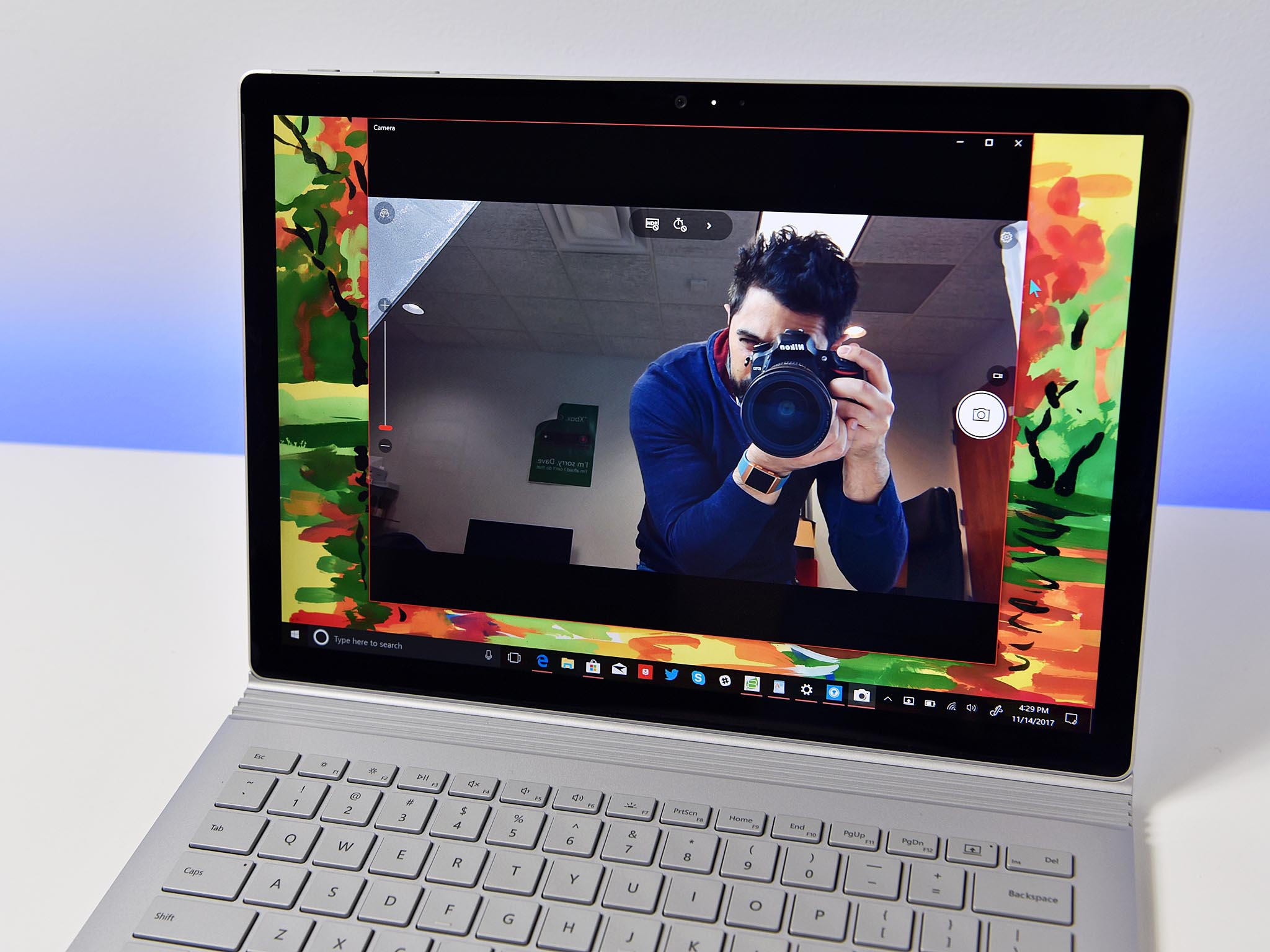
In the upper bezel of the display sits a 5MP front-facing camera with dual microphones capable of 1080P video for Skype calls. Video quality is excellent; the Surface team worked with their Microsoft cohorts on the Skype team to make sure viewing angles, width, and color were optimized for the video phone service.
That camera area also houses the Windows Hello infrared facial recognition system. Matching Surface Pro and Surface Laptop, the Surface Book 2 now has an instant-on mode for quicker resume times from standby. With Windows Hello, biometric login times are significantly faster than the original Surface Book due to improved hardware.
Surface Book 2 13 trackpad and keyboard
There are a few subtle changes in the new Surface Book 2 keyboard. Key travel was marginally reduced from 1.6mm to 1.55mm (that difference is less than the width of a human hair). The response curve for key return now matches the tuning of Surface Laptop. The F1 and F2 secondary functions now control display backlight (instead of FN + Backspace).
The Surface Book 2 typing experience is better than the original Surface Book. Key clicking is also now quieter, drawing less attention when you're mashing away at that term paper in a silent library.
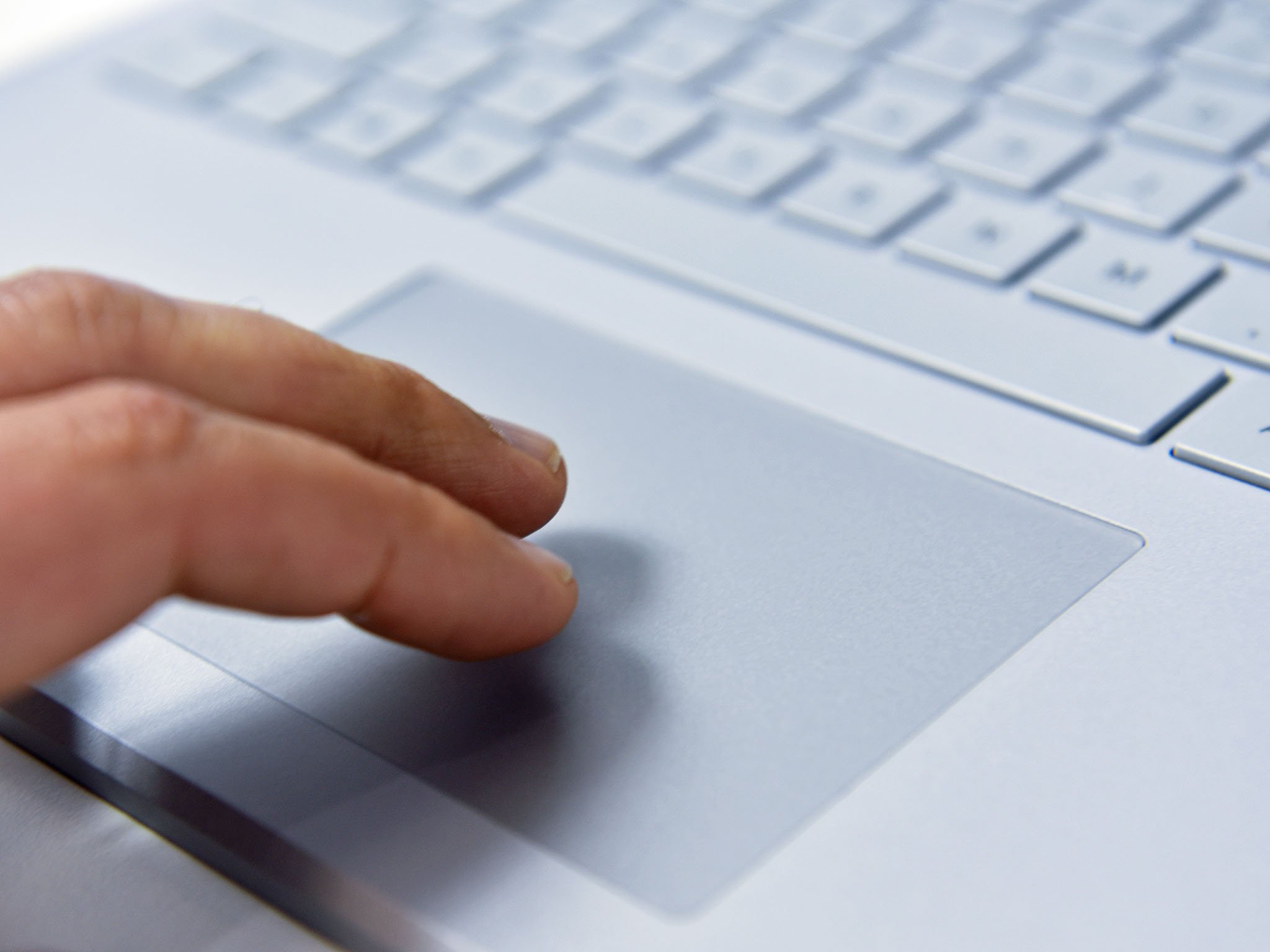
There is still a three-stage backlight for the keyboard. It works well, but you'll have to enable it through the F7 key manually.
The new trackpad is better for clicking and smooth for tracking.
The trackpad is glass-covered, very smooth and broad, but is otherwise the same size as the original. Microsoft, of course, uses its Precision drivers, so all Windows 10 gestures, tracking, and tapping are perfected.
Compared to the last Surface Book the new trackpad is better for clicking and smooth for tracking. It is subtle, but Microsoft tuned the Surface Book 2 to the Surface Laptop's trackpad. These are all excellent modifications.
I have no qualms about claiming – like the Surface Book 2 15 – the Surface Book 2 13 easily has the best keyboard and trackpad of any Windows device I have ever tested. It's no contest.
A step into the future of USB
Surface Book 2 13 ports
Whereas the Surface Laptop is now the "true" Surface Ultrabook, the Surface Book 2 is now a full-fledged workstation. That is reflected in performance as well port selection.
Microsoft kept the two USB Type-A 3.1 ports on the left side with a full SD card slot for photographers. On the right is the proprietary Surface Connect port used for the modestly-sized 102W charger. That port also doubles as a connector for the Surface Dock port expander.
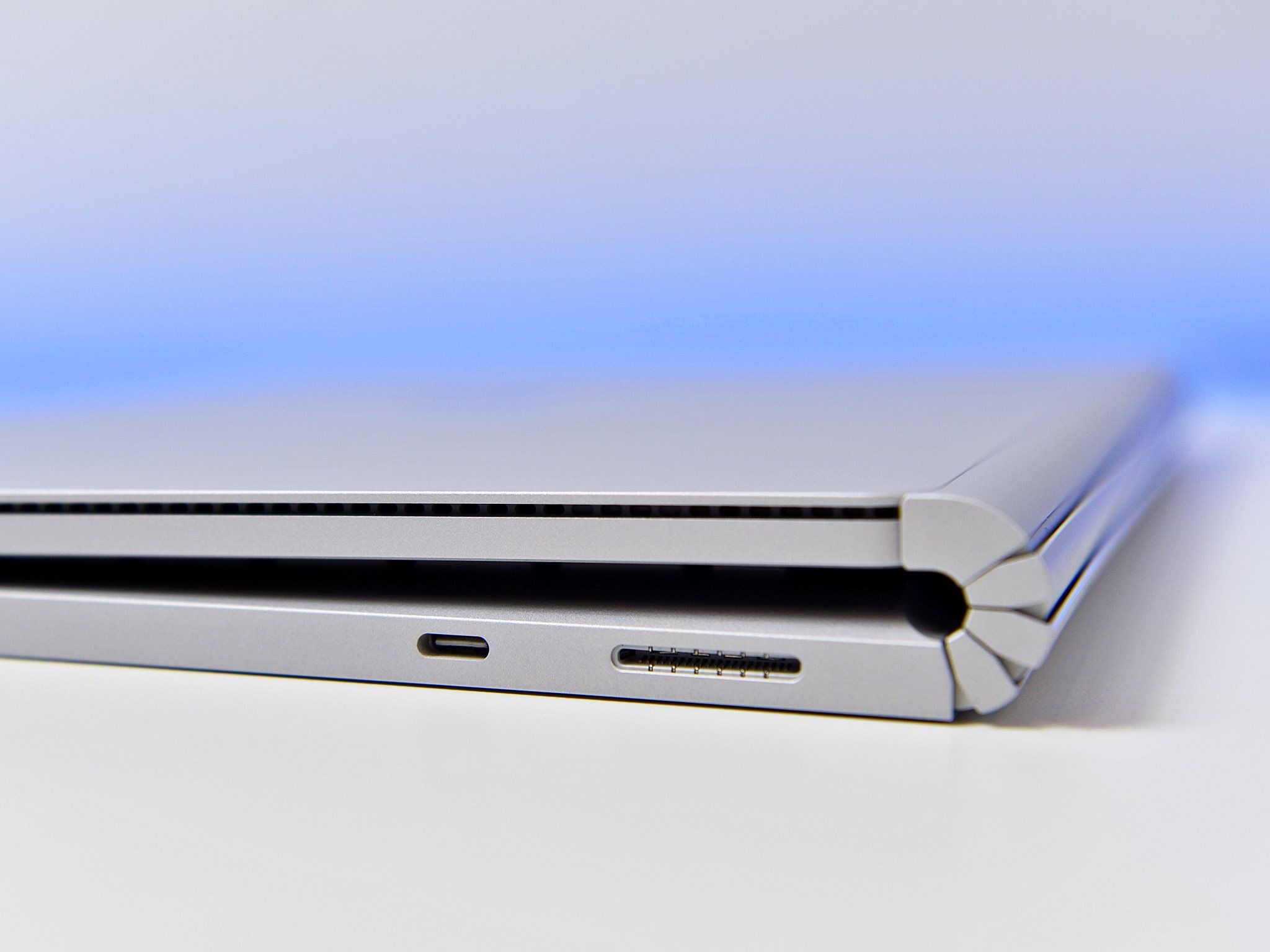
Instead of a DisplayPort, however, Microsoft chose a USB Type-C 3.1 port, bringing the Surface Book 2 a bit more into the future compared to Surface Laptop and Surface Pro. The port can charge Surface Book 2 – if the wall charger is high enough – charge other devices, act as a display-out or can be used for data, e.g., a Type-C hub.
When splitting it between power, data, and display, such as through a port hub, users will get only two data lanes for the screen. That results in a maximum secondary display resolution of 2880 x 1800 at 60Hz allowing the most popular resolution today — QHD (2560 x 1440) — to be used.
Alternatively, if you are only using a secondary display through USB Type-C (using all four data lanes), the Surface Book 2 supports up to a 4K output resolution at 60Hz.
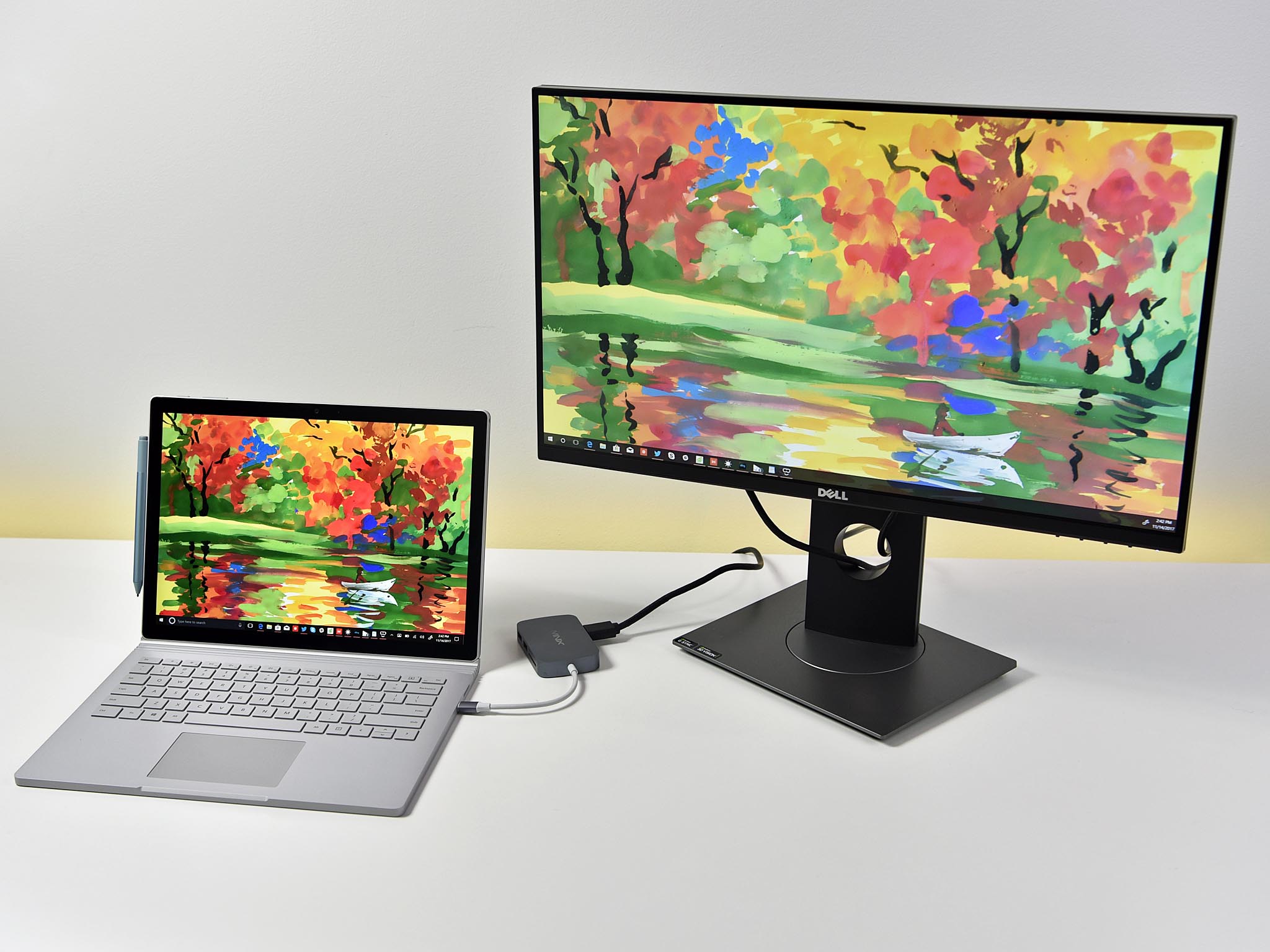
It's not clear why Microsoft went with USB Type-C, but didn't go all the way with Thunderbolt 3
What is lacking is Thunderbolt 3 – a variant and superior specification of USB Type-C. That means users will not be able to utilize an external GPU (eGPU) with the Surface Book 2 nor power multiple 4K displays at 60Hz through a single port. It's not clear why Microsoft went with USB Type-C 3.1 – which lays the groundwork for Thunderbolt 3 – but did not go all the way. This is especially true with the GTX 1050, which is an excellent GPU, would benefit from an eGPU with a GTX 1080Ti for gamers, or video editors.
Otherwise, the port selection on Surface Book 2 is excellent. Many professionals still need the SD card slot and USB Type-C 3.1 is still much more useful and flexible than a DisplayPort going into 2018.
In your face
Surface Book 2 audio
There are two front-firing speakers located in the upper side area of the display. Microsoft had to precision cut the glass for the barely visible speakers.
Audio quality is excellent despite the small size. The speakers are improved for 2017 and are aimed right at the user's ears. The sound was loud, crisp, and overall just excellent. Audio separation is excellent delivering a substantial stereo effect.
Dolby Audio is supported out the box and users can use Windows Sonic or Dolby Atmos for headphones to enhance the audio further.
We're going to need a bigger chart
Surface Book 2 13 performance
Although the Surface Book 2 15 will easily beat the Surface Book 2 13-inch, that does not make the smaller version any less impressive.
A more natural way of saying this is even the Surface Book 2 13 beats last year's Dell XPS 15 (9560), which is a beastly 45W Core i7 machine. That extra edge lets those who opt for the Core i7 Surface Book 2 13 do some serious and real gaming too.
CPU
Geekbench 4.0 benchmarks (higher is better)
| Device | CPU | Single core | Multi core |
|---|---|---|---|
| Surface Book 2 15 | i7-8650U | 5,036 | 14,237 |
| Surface Book 2 13 | i7-8650U | 4,862 | 14,694 |
| XPS 15 (9560) | i7-7700HQ | 4,503 | 13,587 |
| Razer Blade 2017 | i7-7700HQ | 4,277 | 13,597 |
| Surface Laptop i7 | i7-7660U | 4,714 | 9,535 |
| Surface Pro 2017 | i7-7660U | 4,513 | 9,346 |
| Surface Book | i7-6600U | 3,977 | 7,486 |
Compared to the original Surface Book the Surface Book 2 has a higher single core score and nearly doubles the multi-core, due to the new quad-core abilities. More significantly, a 15W Ultrabook processor handily beat a 45W quad-core chip – last year's flagship Intel i7-7700HQ. That's remarkable progress.
GPU
Geekbench 4.0 CUDA (higher is better)
| Laptop | GPU | Score |
|---|---|---|
| Razer Blade 2017 | GTX 1060 | 138,758 |
| Surface Book 2 15 | GTX 1060 | 132,785 |
| Surface Book 2 13 | GTX 1050 | 75,665 |
| XPS 15 | GTX 1050 | 75,636 |
| Surface Book | GTX 965M | 59,945 |
Here we can see how powerful the GTX 1060 is but the GTX 1050 in the Surface Book 2 13 is exactly where it should be when compared to the Dell XPS 15, which has the same GPU. The Surface Book 2 13 (75,665) also wipes the floor with the Surface Book with Performance Base (59,945) putting to rest any questions there.
PCMark
PCMark Home Conventional 3.0
| Device | Score | Comparison |
|---|---|---|
| Razer Blade | 3,280 | Better than 66 percent of all results |
| Razer Blade Stealth | 3,115 | Better than 58 percent of all results |
| Surface Laptop i7 | 3,156 | Better than 62 percent of all results |
| Surface Book 2 15 | 3,038 | Better than 57 percent of all results |
| Surface Book 2 13 | 3,090 | Better than 57 percent of all results |
| Surface Pro 2017 i7 | 3,055 | Better than 57 percent of all results |
| Surface Laptop i5 | 2,494 | Better than 40 percent of all results |
SSD
CrystalDiskMark (higher is better)
| Device | Read | Write |
|---|---|---|
| Surface Book 2 1TB | 1,411 MB/s | 1,202 MB/s |
| Surface Laptop i7 | 486 MB/s | 244 MB/s |
| Surface Pro 2017 | 1,284 MB/s | 963 MB/s |
| Surface Book 1TB | 1,018 MB/s | 967 MB/s |
| Surface Laptop i5 | 423 MB/s | 237 MB/s |
The Samsung PCIe NVMe SSD appears to be a good one with solid read and write speeds for this class of device. While there are faster storage options, e.g., Samsung 960 PRO for most users the storage speeds are excellent and performant.
Taking a closer look at the new PCMark 10 the Surface Book 2 15 gets a score of 4,049, which is better than 43 percent of all results. That number puts the Surface Book 2 13 just below a gaming PC classification, but well ahead of a standard productivity laptop. By comparison, the 15-inch Surface Book 2 yielded 4,323 on PCMark 10 likely due to the higher TDP value and GPU.
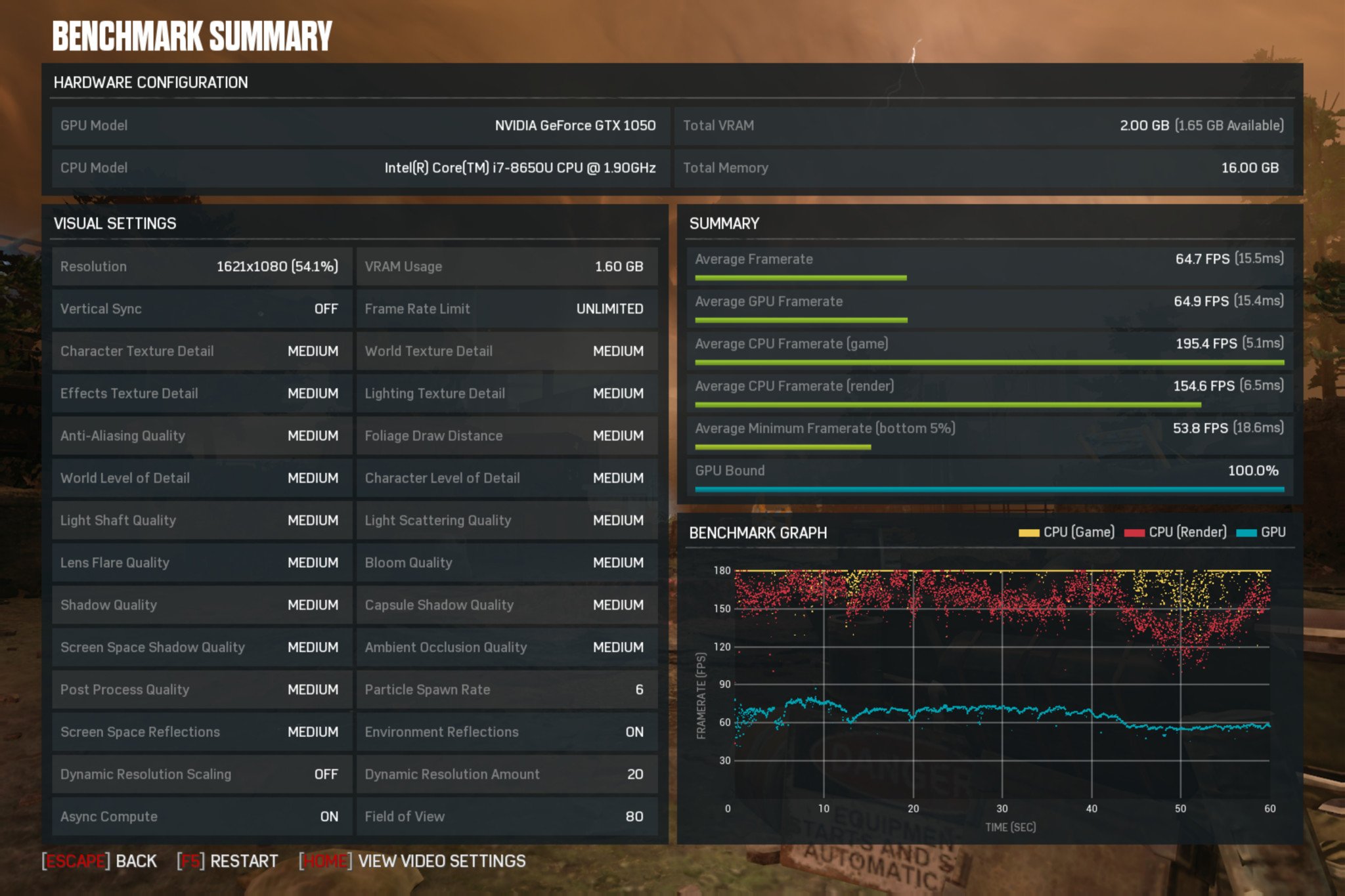
Putting aside synthetic benchmarks is real-world gaming. Comparing 2016's Gears of War 4, which has multiple graphics configurations and a built-in benchmark, we can compare the Surface Book 2 13 to the 15-inch model with a GTX 1060 and the older Surface Book with Performance Base and its GTX 965M:
Gears of War 4 UWP
| Laptop | Resolution | Graphics presets | V-Sync | Average frame rate |
|---|---|---|---|---|
| Surface Book 2 13" | Medium | 1620 x 1080 | Off | 65 FPS |
| Surface Book P. Base | Medium | 1620 x 1080 | Off | 47 FPS |
| Surface Book 2 15" | Medium | 1620 x 1080 | Off | 96 FPS |
Surface Book 2 13 gets a substantial jump in performance with a net gain of 18 frames-per-second over the same game configuration running on the Surface Book with Performance Base. Of course, the Surface Book 2's 15-inch version with a GTX 1060 blow everything out of the water making that an even better option for gamers.
Did you hear that?
Surface Book 2 13 fan, heat, noise, and battery
Microsoft did an excellent job of thermal dissipation with the Surface Book 2 13. That's due in part to having active cooling for the GPU in the base. Interestingly, the CPU does not have a fan even for the Core i7 model, relying instead on passive cooling.
During intense gaming, while maximizing the CPU and GPU the bottom of the Surface Book 2 13 did get warm peaking at 106 degrees F (41 degrees C), but it was never hot or uncomfortable. Likewise, the back of the display where the CPU resides also got warm, but never got hot to the touch.
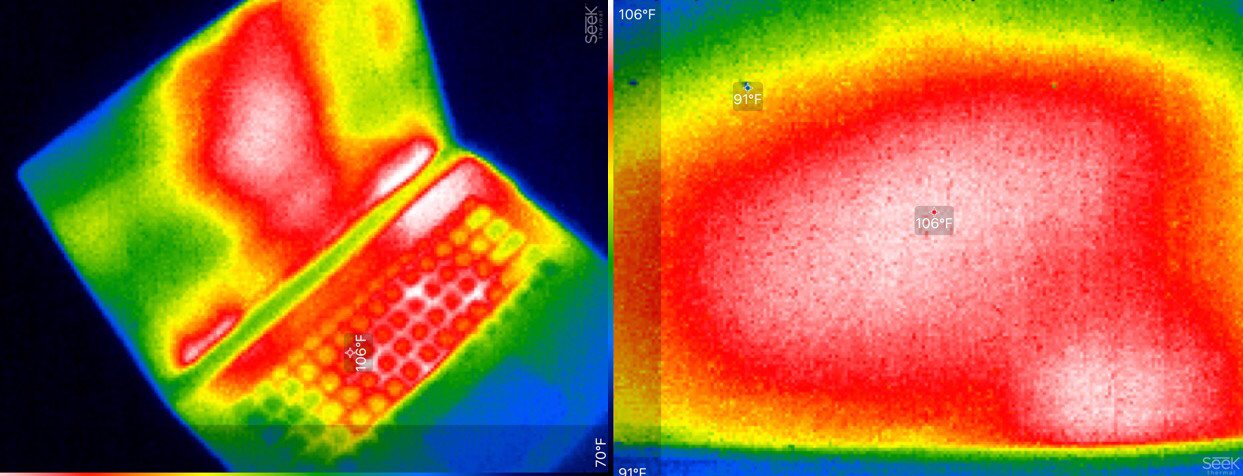
Fan noise when gaming and using the CPU and GPU at 100 percent is audible at 51dB – you certainly will hear the rush of air being pushed out from the Surface Book's GPU. The noise, however, is never annoying like a high pitch whine, more like just rushing air being pushed out a small vent.
During normal PC use, e.g., web browsing, watching videos, using standard Windows applications noise levels were zero.
I was able to comfortably get 9-11 hours a day out of the Surface Book 2 13, and I'm a relatively heavy work user.
While plugged in and with the processor set to performance I did hear some coil whine (a high pitch oscillating noise). I'm not sensitive to coil whine, which is usually found near the keyboard on laptops (since the CPU and motherboard are below it), but on the Surface Book 2 I did notice it more than I would prefer. The issue seems prevalent only when plugged into the AC, and it is exacerbated when set to performance instead of recommended.
Battery life gets complicated. Microsoft claims 17 hours based on a closed-video feedback loop. It's a decent benchmark to compare with other laptops tested the same way, but it's also a rare use case for a laptop. Real world use, loading websites, editing photos, some light gaming, and the like will hit the battery harder. I was able to comfortably get 9-11 hours a day out of the Surface Book 2 13, and I'm a relatively heavy work user. Throwing on battery saver and keeping the display brightness down should easily yield a few more hours.
Those numbers shift, however, if taxing that GTX 1050 GPU. Pushing that GPU will run that battery down to three or four hours depending on the type of game. That's in line with most gaming laptops, however, and is still better than expected.
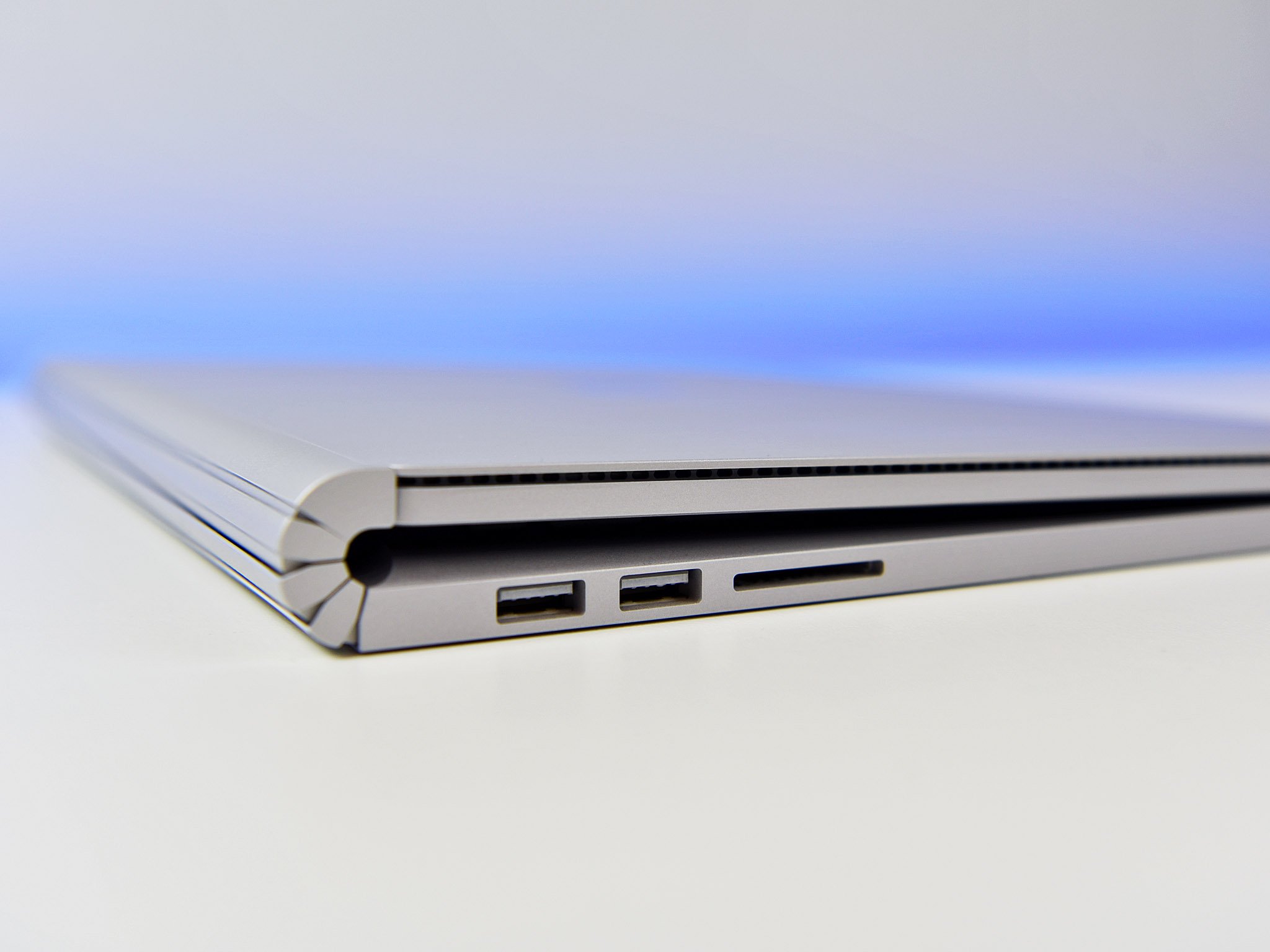
As a tablet the Surface Book 2's top half is about 20 percent of its total capacity. When used alone you can expect about 20 percent of the battery life of the whole Surface Book 2, though that's also without the battery-taxing GPU in the base. I fired up Netflix and set the display brightness to 50 percent and the tablet half alone got close to two and a half hours of non-stop Stranger Things. That's not terrible, but also not fantastic. It's also right in line with what I get from the smaller 13-inch Surface Book 2 in tablet mode, as well as the original Surface Book. Pushing display brightness down to 25%, which is still very enjoyable, or using Battery Saver pushes tablet battery life closer to three hours.
The Surface Book 2 13 just has outstanding battery life. I never felt I had to take the 102W AC wall charger with me for the day or monitor my usage to preserve the battery. Of course, how you use the Surface Book 2 untethered will significantly affect your experience, but even for those pushing the device hard should be pleased.
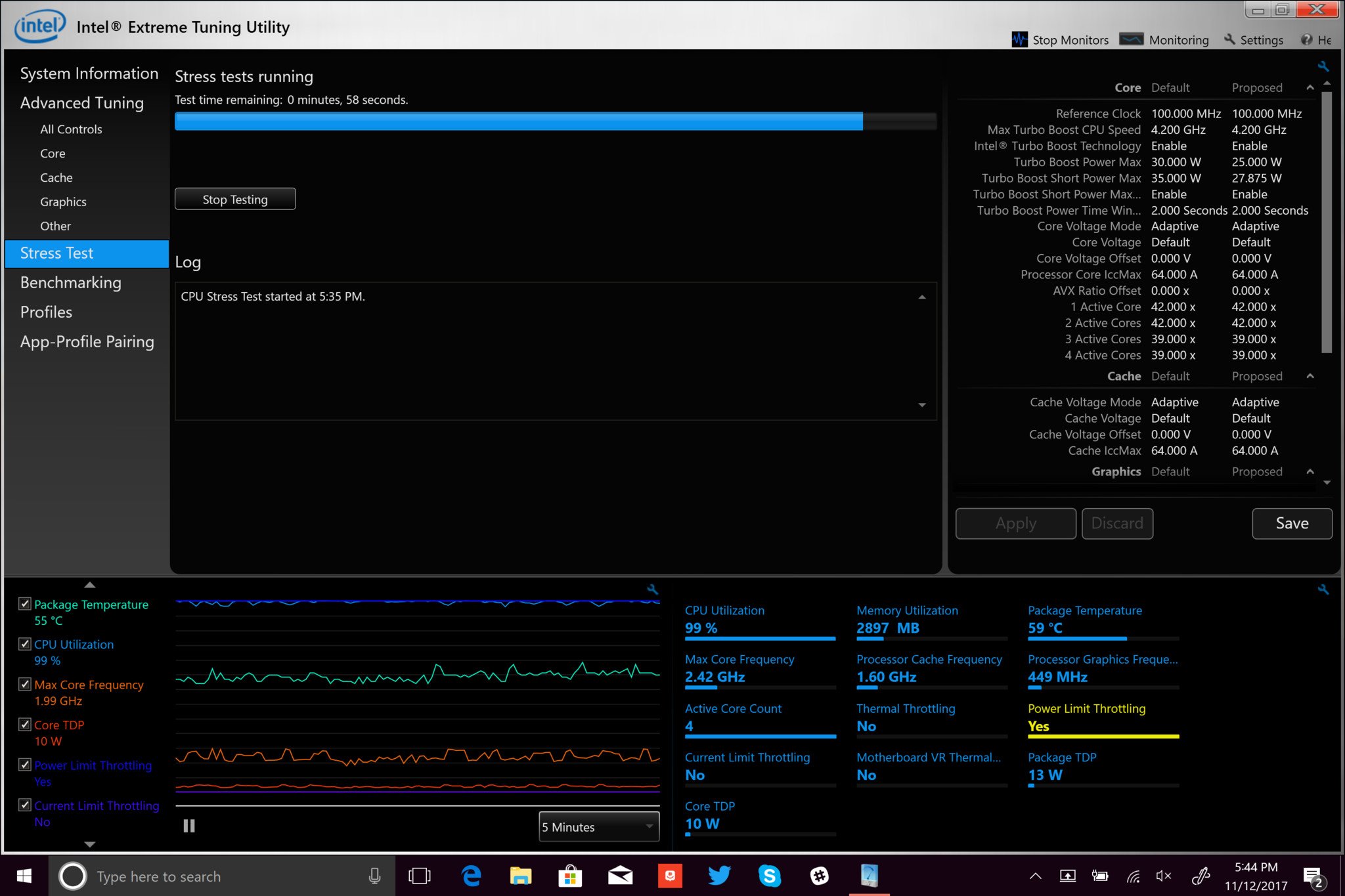
For CPU stress test, the Core i7 without a fan does exhibit more throttling when maxed at 100 percent for more 15 minutes straight or more when compared to the actively cooled processor in the 15-inch version. This happens through power-limit throttling (PL1), which modulates the power going to the processor to keep the chassis below a certain threshold. Instead of running at 15W the chip dips down to 8-12 watts, reducing the core frequency down to 1.99GHz.
During the same test, the Surface Book 2 15 ran at nearly 2.6GHz due to the fan and higher wattage. All modern laptops do this throttling to some degree in the right conditions, but it is interesting to see the contrast with the 15-inch Surface Book 2. For regular users who occasionally blast the CPU for minutes at a time, none of this will matter.
A worthy successor
Surface Book 2 13: The Bottom Line
Coming from the original Surface Book and Surface Book with Performance Base, the Surface Book 2 13 feels like a significant improvement, even if on the outside they look nearly identical. Microsoft rebuilt and re-engineered the Surface Book 2 from the ground up, and you can feel it when using it daily.
Being able to get significantly more processor and graphics performance while improving battery life is outstanding. While I would not classify the Surface Book 2 13 as a gaming laptop due to the smaller power supply and the GTX 1050, it has proven capable playing significant games for extended durations.
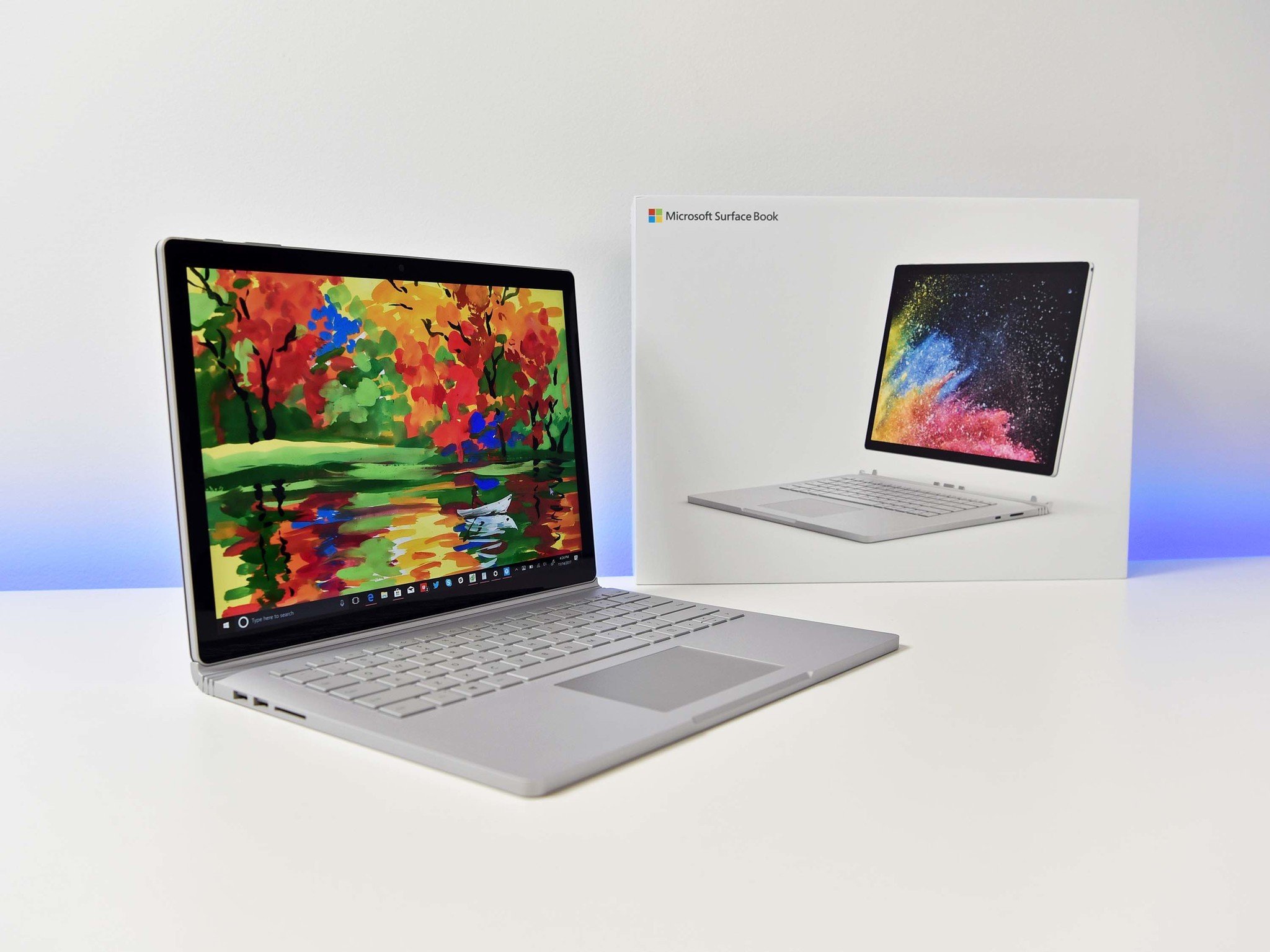
Everything from the typing experience, to the trackpad, audio, the display are excellent for a Windows PC. It's the sum of the parts that make up the whole experience, and that point is driven home here with the Surface Book 2.
That's not to say everything is perfect. Microsoft's Windows Mixed Reality Ultra seems to be an afterthought with the Surface Book 2. With no HDMI port – which all Windows Mixed Reality headsets use – consumers need to get a USB Type-C to HDMI converter. Moreover, they should get a USB Type-C hub with HDMI and USB Type-A, because those Type-A ports are on the other side of the laptop which makes splitting the cable difficult.
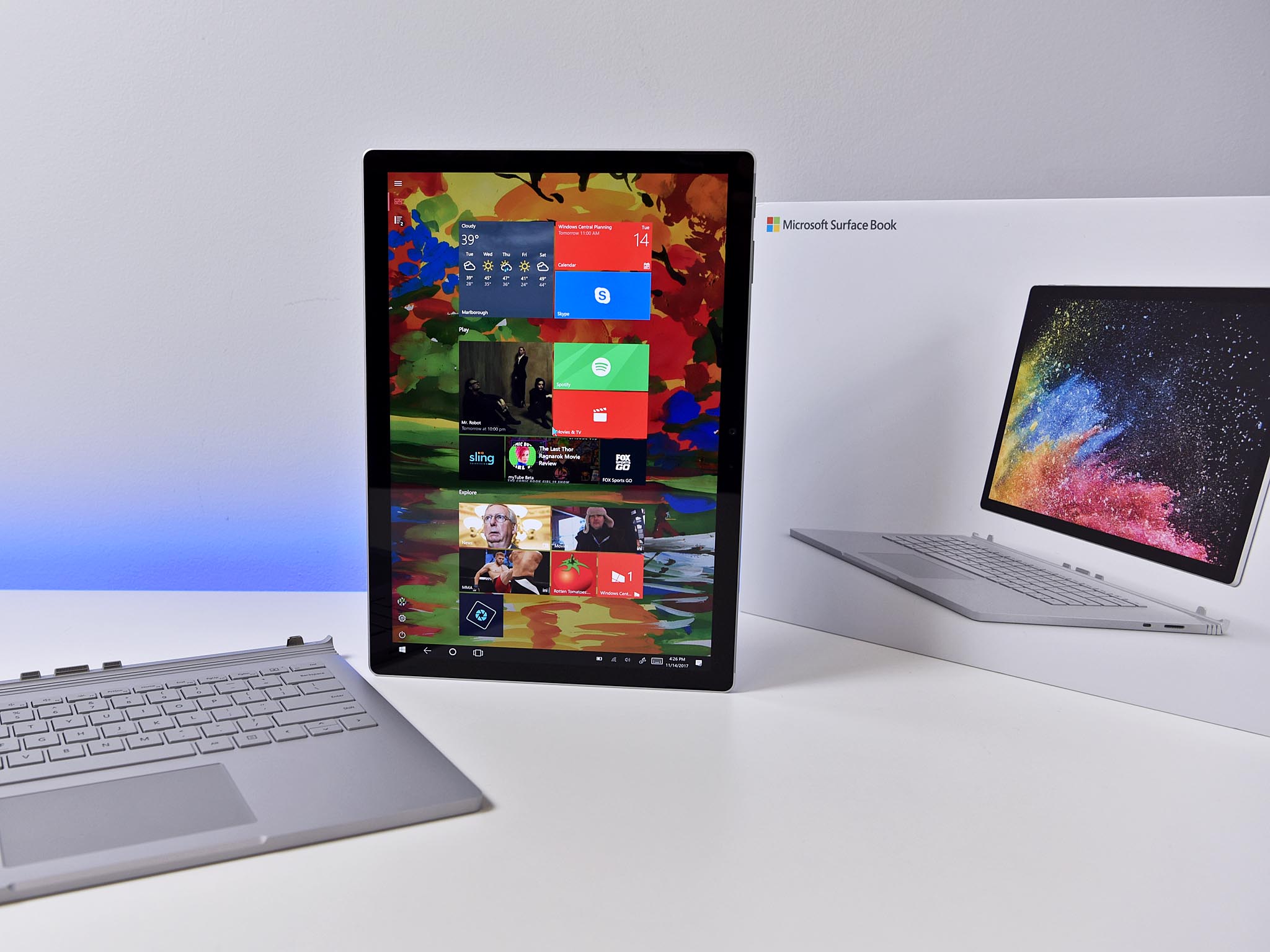
Microsoft has a special HDMI converter that can be used for Windows Mixed Reality, and I am told the experience should be fine, so this may be just an early-adopter issue with matching the right components (I'll update this review if that changes).
Microsoft missed an opportunity by not including Thunderbolt 3 support, which just seems weird since there's already a USB Type-C port. I can already hear some enthusiasts lamenting how close this laptop is to perfection – and they're not wrong. It's a bizarre oversight when so much else was done right.
Others will opine that Microsoft does not include the Surface Pen this time around, but I see that as forgivable mostly because I rarely use the pen myself (even if I think it works great). Microsoft says they sunk those costs from the pen back into using higher quality components – we'll have to take them at their word.
The Surface Book 2 feels complete and not rushed to market like the original
Some enthusiasts may also be bothered with mild light bleed for the LCD, coil whine from the CPU, or some chassis throttling that reduces processor performance.
But those complaints won't matter for most users (and if they do bother you, well, you were just warned). The overall experience with Surface Book 2 is fabulous. During my testing, I didn't experience any bugs, quirks, crashes, failure of the Windows Hello camera, random battery drains, or failures to turn on. I mention those because those were all common issues with the original Surface Book launch two years ago. Like the new Surface Pro and Surface Laptop the Surface Book 2 feels complete and not rushed to market like the original (it was timed to launch with Windows 10).
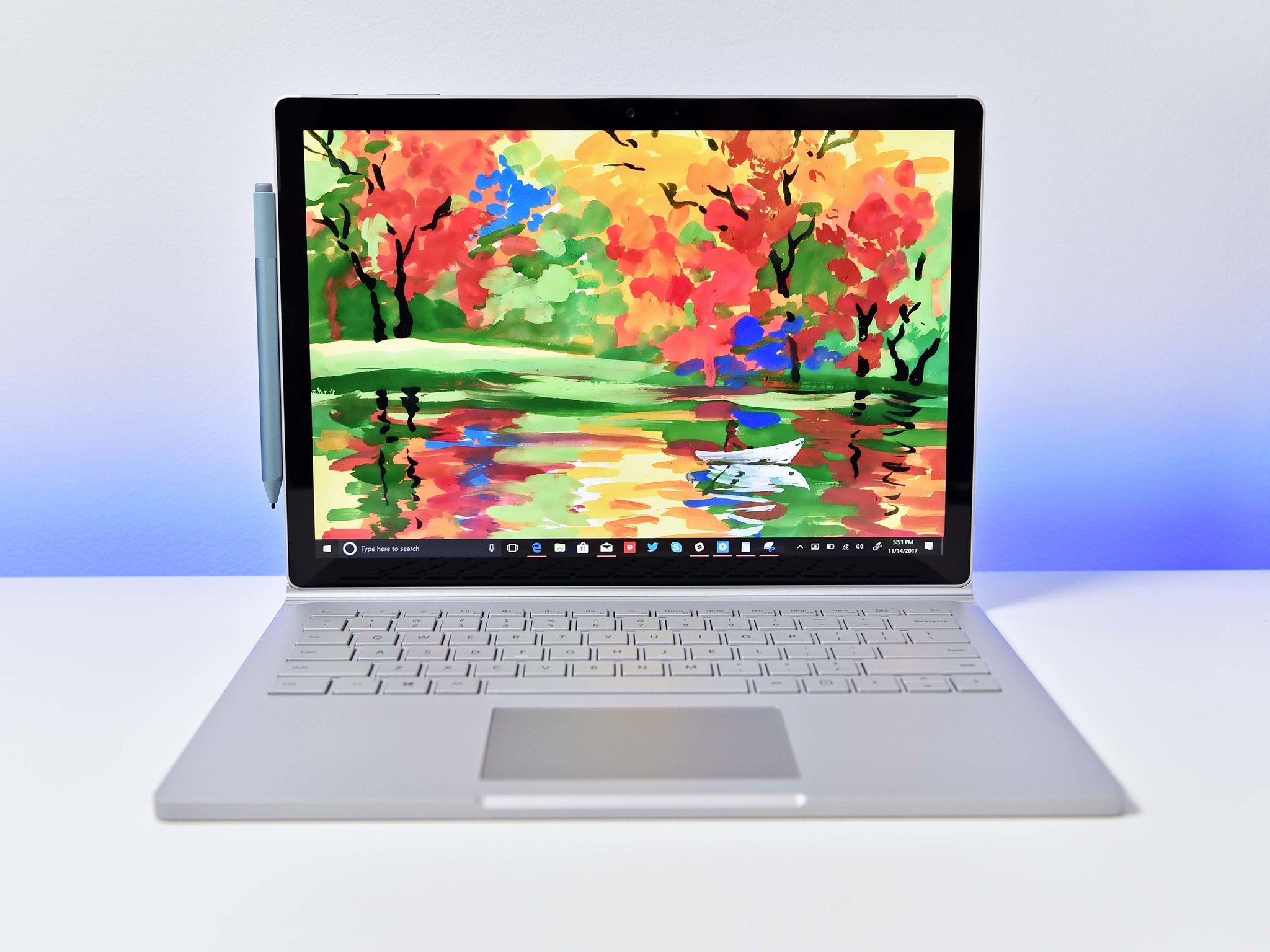
Yes, the cost of the Surface Book 2 is extraordinary. Paying $3,000 for the 1TB model is crazy, but the price falls in line with Apple charges for its prestigious MacBook Pro line, which is this is competing against. No one buys a Surface because it's a good value, but rather because it's a great experience. For those who cannot afford a Surface Book, others like HP and Dell are making some outstanding alternative hardware that won't break the bank.
If I had to choose between the Surface Book 2 13 and Surface Book 2 15, I would go for the latter because I prefer the larger display and being able to use that GTX 1060. But make no mistake, both are cut from the same cloth and are significantly more potent than any Surface to date.
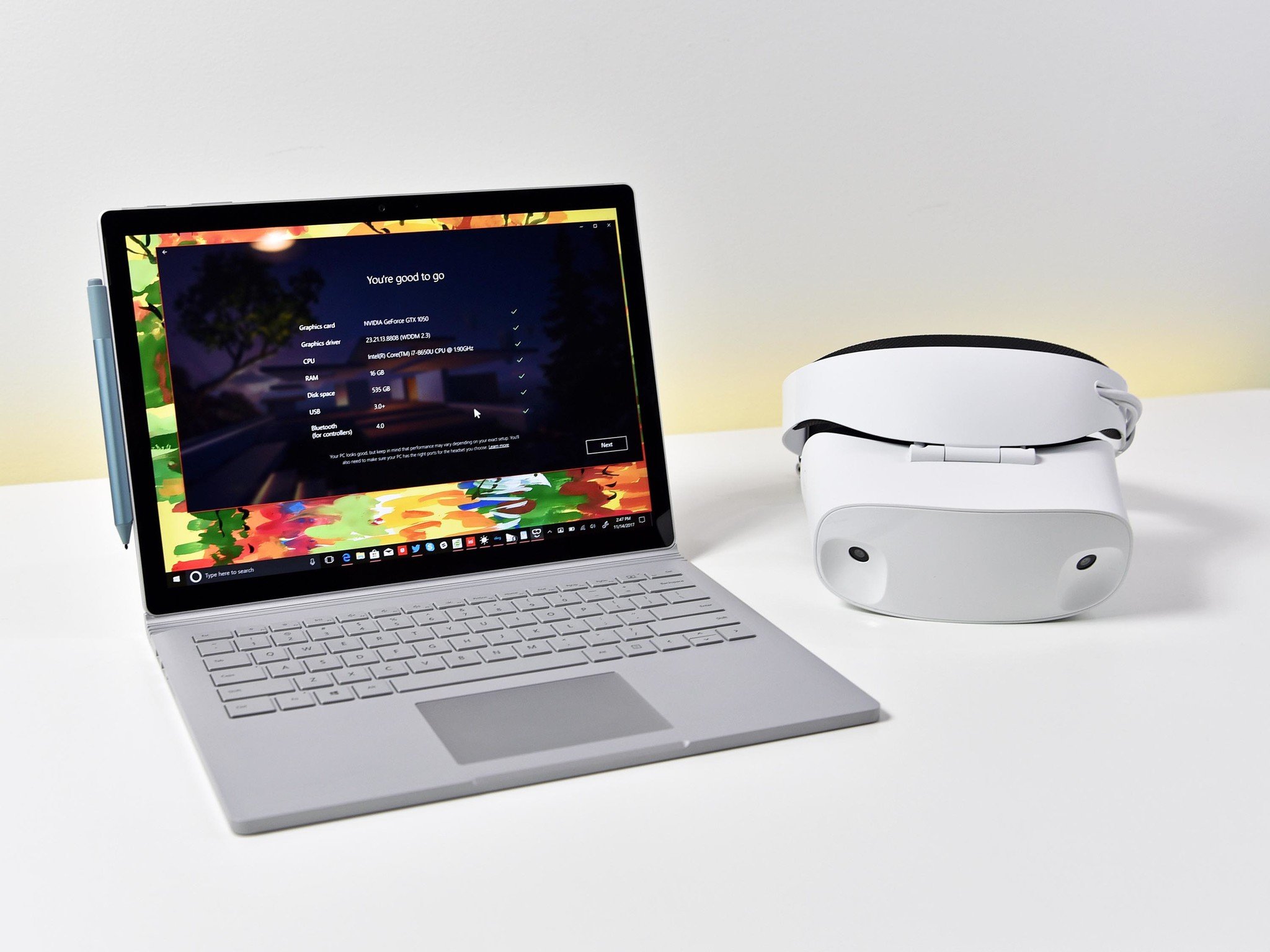
The distinction between Surface Pro, Surface Laptop, and Surface Book 2 is now more apparent with the Surface Book 2 becoming an actual "powerhouse" PC and the Surface Laptop being the lighter Ultrabook. That's a good thing for consumers, who may have been confused before.
Microsoft's Surface vision is coming into focus and with the Surface Book 2 13 it has again set the bar for the ultimate PC laptop. They always say wait for version two of a new product, and that rings true now more than ever.
Pros:
- Serious computing power for professionals, students, and even some gaming.
- Refined and improved hardware for 2017.
- All-day battery life.
- Excellent display and typing.
- A PC that is nearly capable of everything.
Cons:
- No Thunderbolt 3.
- Still very expensive.

Daniel Rubino is the Editor-in-chief of Windows Central. He is also the head reviewer, podcast co-host, and analyst. He has been covering Microsoft since 2007 when this site was called WMExperts (and later Windows Phone Central). His interests include Windows, laptops, next-gen computing, and wearable tech. He has reviewed laptops for over 10 years and is particularly fond of 2-in-1 convertibles, Arm64 processors, new form factors, and thin-and-light PCs. Before all this tech stuff, he worked on a Ph.D. in linguistics, performed polysomnographs in NYC, and was a motion-picture operator for 17 years.
